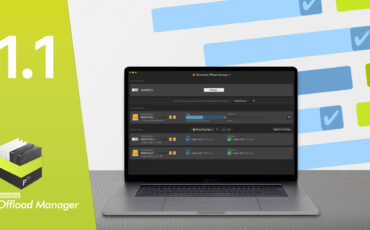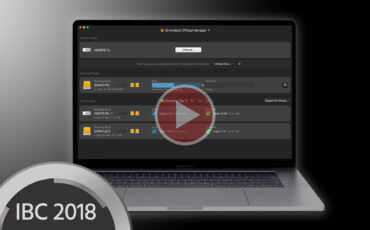Awesome Pixels x Ottomatic Pixel Cube Explained – Automated Remote Offload Solution for DITs
During IBC 2024, we stopped by the Awesome Pixels x Ottomatic booth to check out the Pixel Cube, an almost fully automated offload solution for camera media aimed at productions that cannot afford to have a DIT on set. The Pixel Cube packs all the hardware required for a professional offloading workflow in an easy-to-carry hard case.
Whether you’re shooting a Hollywood movie or a simple corporate video, the entire value of the production is spent on gathering (hopefully amazing) shots that get stored on your camera media. Losing those files could mean burning tens of thousands (or, sometimes, even millions) of dollars, so the backup process deserves the utmost care and attention.
German DITs Ben Hagen and Joshua Park know this very well. However, they are also aware that not all productions can afford to bring a data wrangler or a DIT on set. As a consequence, they came up with a mixed solution of hardware and software to provide professional offloading services at an accessible price. So, let’s see what the Pixel Cube is all about!

Pixel Cube streamlines DITs workflows
To start off, the Pixel Cube packs all the hardware modules required to safely offload and backup your cards into a convenient peli case. These include the logic board of a Mac mini, card readers for all sorts of camera media, SSD backup drives with up to 32TB of storage capacity, Thunderbolt 4/Ethernet/USB connectivity, as well as a 5G router for the upload of proxy files and remote monitoring of the offload status.
Color Correction with DaVinci Resolve

Some of these parts, like the card readers, are swappable, so you can customize the workstation to fit the needs of your production. Moreover, the system can be powered using a V-mount battery, so it can also serve you in remote locations.
Pixel Cube – offloading made simple
But how does it work? Well, it looks pretty straightforward. Indeed, once you pull the card from your camera, all you have to do is put it into the dedicated reader. The Pixel Cube will then automatically offload it onto the internal SSD drives using a pre-determined folder structure, transcode the footage, and upload proxies to a cloud service. Once offloading is completed, the system uses Ottomatic’s Parashoot to pre-format the card, so when you put it back into the camera, you know if it was offloaded or not. Moreover, some industry-standard workflows found in software such as Silverstack are integrated into Pixel Cube.

What’s most interesting, though, is that once the whole workflow is set up, the DIT can monitor the whole process remotely without having to be physically present on set. This makes it possible for DITs to sell their services to small productions that otherwise wouldn’t have the budget to pay a specialized professional for a whole shooting day.
Price and availability
Currently, there’s no official info regarding the price and availability of the Pixel Cube. As a reference, Ben and Joshua told us they are already renting out the Pixel Cube to productions in Germany for about €150/day.
For more information, please visit Awesome Pixels’ website here.
Are you a DIT? What do you think of the Pixel Cube? Would you consider adding this solution to your kit and selling it as an extra service? Let us know your thoughts in the comment section below!





























